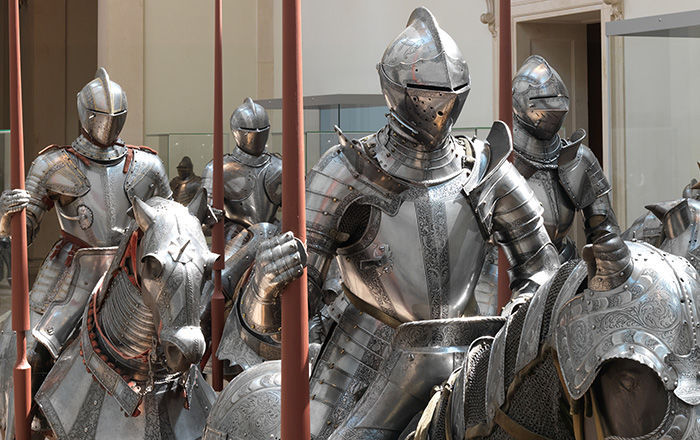Horse Muzzle
Not on view
This muzzle is composed of a basket made of several pierced iron panels riveted together, with two kidney-shaped openings at the front for the horse’s nostrils. It hung on the horse’s head by means of a leather headstall.
At the front, an elongated dragon with a shield on its back leans over pierced vegetal scrolls. Above its head a partly damaged cartouche bears the date (1)56(9). Each side panel is adorned with a griffin and an interlaced knot motif, while the crown (the upper part of the basket) displays in the center the imperial two-headed eagle, surrounded with deer hunting scenes and mermaids in vegetal scrolls.
Horse muzzles were used to preventing stallions from biting. Such pieces, however, seem to have above all been used as lavish equestrian ornaments, particularly in fashion in eastern Germany in the second half of the 16th and the early 17th century. This pierced decoration is typical of the work of the spur makers living in the southeast of Germany and Saxony in the 16th and 17th centuries. Despite their name, spur makers not only made spurs, but also small equestrian hardware like bits, stirrups, muzzles, cavessons or curry-combs, sometimes adorned with the same intricate decoration.
